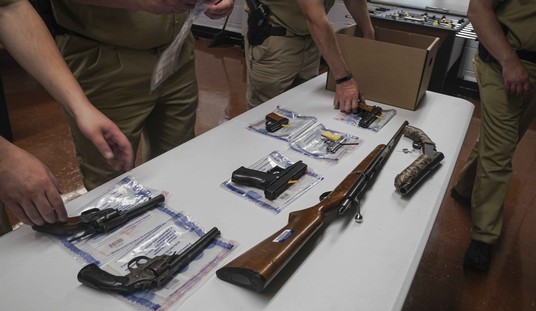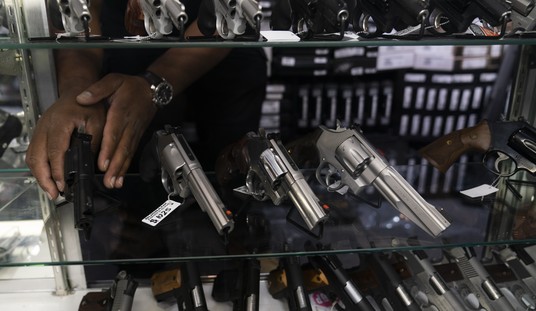The idea behind red flag laws sounds simple enough. You swoop in and take the guns from people who might be a danger to themselves or others. Once you do that, everything is right as rain.
Except, there are significant problems with this.
Even if you don’t account for the due process concerns or the fact that such laws don’t do anything to address the supposedly dangerous person still on the loose, there’s the very real concern that you’re not actually taking guns from anyone who is really a risk.
But we’re told they work. In fact, Michigan is considering one right now.
Yet a media outlet there has to admit that it’s unclear whether the laws actually work.
Michigan lawmakers this week may approve a series of gun reform measures, including the so-called “red flag” law to allow judges to authorize the temporary seizure of guns from those deemed dangerous to themselves or others.
Nineteen states and Washington, D.C. have similar laws, many passed in the past five years. The laws are rarely enforced and enforcement varies from state to state and county to county, Bridge Michigan found reviewing research and through interviews with lawmakers, sheriffs and judges.
Even supporters who say the laws can prevent tragedies acknowledge their effectiveness is hard to measure.
“If a crime doesn’t occur, how do you quantify that?”said Jack Tuter, chief judge of the 17th Judicial Circuit in Broward County, Florida. The state adopted the red flag law in 2018 after a teen gunman killed 17 people at the Marjory Stoneman Douglas High School in the city of Parkland the same year.
Nationwide, about 15,000 people in 19 states and the District of Columbus had guns removed since 2020 as a result of red-flag laws, according to an investigation in September by the Associated Press, which deemed the rate “woefully low and not nearly enough to make a dent in gun violence.”
Effectiveness “depends on how many (orders) are being used and how well targeted they are to people who are risky,” April Zeoli, policy core director of the Institute for Firearm Injury Prevention at the University of Michigan, told Bridge.
“They have to be implemented to make a difference.”
However, there’s a disconnect with proponents of red flag laws.
See, they argue they have to be implemented to make a difference, but they also argue that they make a difference simply by being implemented. They’re basically counting those orders even existing as evidence the laws work.
There’s no real attempt at discerning how many people were really a threat, either to themselves or the general public. As a result, this push is really about just issuing more orders and little else.
Yet 15,000 people isn’t exactly chump change. One would imagine we might see at least something of a downtick in so-called gun fatalities if these worked.
We don’t, though.
Now, it’s possible that there really hasn’t been enough of a sample size to make a difference. It’s also possible that few if any of those 15,000 red flag orders actually were issued against someone who was really a threat.
It’s also possible that while it might have stopped someone from shooting themselves or someone else, it didn’t stop them from killing themselves or someone else. That’s an important distinction usually missing from this conversation on red flag laws.
The truth of the matter is that the studies are likely unclear because the law is about useless. It might be used in some legitimate cases, but it’s also used in a lot of instances where someone gets bent out of shape about what Uncle Joe said at Thanksgiving and decides to punish him by getting a red flag order taken out.
Let’s remember that red flag laws do not require evaluation by anyone in the mental health field. It’s based on the judgment of total laymen with no relevant expertise. As a result, it’s hard to believe that they’re going to get it right more often than they don’t.
My guess is that the reason we don’t see any benefit is because they get it wrong most of the time. The issue is that proponents of red flag laws simply don’t care.








